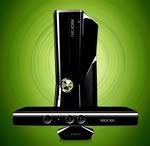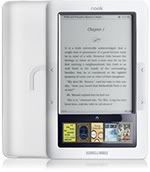What I Think About...
Thursday, May 8, 2014
Net Neutrality
But that's neither here nor there of course, as that only affects my personal life and is pretty meaningless to your life.
But there is a new horror rising up around us all, one that does affect us all, primarily in the USA, but in other countries as well. The issue of net neutrality.
Imagine an internet where you, the consumer, pays for access to this network of websites, services, and entertainment. Your plan's contract says you get an open doorway with the only restriction being that what you do must be legal. This is great, no problem here.
Now imagine on the other side of that doorway thousands of others paying for that same privilege, unrestricted access to the contents within.
Except there's a catch, you can't see each other. In order for the person at the other end to see you, you have to pay another fee. And in order for you to be able to see the person at the other end, they have to pay to be seen as well.
This is the internet without net neutrality. Your ISP can choose who's allowed to be seen, and charge extra fees for the privilege of being seen.
Now, it won't start this way. No, it will start smaller. And it's already happening. Netflix for instance is already being forced to pay extra fees to ComCast for the privilege of sharing their content with you. That's right, they have to pay twice, once for the bandwidth, and a second time for the fast lane on that connection.
Fast lane... what does that really mean here? In this case, it means the highway is too small, so instead of making the lanes bigger, ComCast kicks everyone off of one lane and reserves it for NetFlix only, reducing the number of lanes available for the rest of the internet traffic.
So now you, the consumer, gets great access to NetFlix, but anything else you do is just a tiny bit slower. It's no longer the 20mbit you're paying for gives you 20mbit to anything you want. No, now that 20mbit gets you 20mbit to NetFlix, but maybe 18mbit everywhere else (for example).
This is the real problem with losing net neutrality and why it's so important to not lose it. If we lose net neutrality, then eventually the only things you'll get to see, are the ones who pay for a fast lane.
Friday, March 9, 2012
Windows 8 Consumer Preview – First Impressions
UGLY!
UGLY!
UGLY!
From the “origami” goldfish, to the DOS-like sliders and toggles during the install, Windows 8 took everything good about Windows design and took a massive, fuming dump on it.
After installing, it appears to run ok, although the ugly continues in its poorly executed Xbox style touch menu. Unlike the Xbox tile menu however, the Windows 8 version is cold and rigid, lacking personality.
After flipping to Aero, there was no discernable way to return to the new tiled UI, and no Start Menu with which to find any apps or return to the UI for further testing. So I reboot the machine, at which point it breaks and goes into a screen (again with the ugly goldfish) “Attempting repairs”.
This is from a clean install on a virtual machine with nothing else installed yet. That’s right, it broke itself straight out of the box. What are we Windows 98 again?
At this point, the repair has taken significantly longer than the install, which clocked less than 15min (very nice). There’s no indication of what’s going on, just the ugly origami fish and the ugly bubbles spinner that has replaced the blue ring spinner.
Eventually it dies and says it couldn’t fix the problem.
Congrats Microsoft, you’ve successfully become Apple. WORTHLESS FLUFF.
Thursday, April 28, 2011
Tablets Devices
Years ago, back in the early days of Windows XP, the PC and Notebook market attempted to introduce us to the concept of Tablet PCs. It was an idea that simply proved to be too early for the technology. It was simply too expensive to be practical.
Today, with the advent of iOS and Android, Tablets have reappeared, bigger, better, faster and more well rounded than ever and—now that the technology has caught up—with reasonable prices.
But a new problem has appeared. Where Tablet PCs in the past combined digitizer and touchscreen technology, this new age of the Tablet PC has done away with the digitizer.
While touchscreen is great for basic navigation, typing, and finger painting blurry smears, it completely lacks the precision needed for writing and drawing. Now, the majority of people will probably never need a digitizer, but for the market where tablets become most useful the digitizer is a key element.
Tablets are the ideal design for artists, but without the digitizer they’re useless. For non-artists, a tablets vs a notebook computer isn’t as large difference. There’s certainly improved portability with a tablet regardless of the user, but the very name tablet speaks of artists.
I can only hope with the renewed vigor in the Tablet PC market that companies will bring back the digitizer. Until they do, I don’t see myself bothering with replacing my laptop.
Saturday, January 8, 2011
...Kinect (XBox 360)




Kinect Sensor (no console)
While the menu systems aren't always very intuitive, game play itself is very natural in most cases. If you want to jump, you jump. If you want to lean, you lean. And so on.
The Kinect Adventures that comes with the Kinect is mediocre, but most of the other mini game packs are fun, especially with friends or family. EA Sports Active 2 and Your Shape are both well made, although each has its own quirks, but they keep things interesting and are designed by people who know fitness.
Surprisingly, considering it's a Microsoft hardware product, the Kinect (and the new XBox 360s [s is for slim I assume, but it's not really slimmer, just smaller]) are extremely well built. They're sturdy and have a solid feel, the Kinect moves smoothly and silently, and the new XBox 360 has a much improved disc drive and cooling system.
All told, I definitely think the Kinect is a worthwhile purchase. It seems a bit gimmicky at first glance, but it works, and that's what really matters.
Thursday, December 2, 2010
...Barnes & Noble Nook






Also unlike the Kindle
Aside from the slightly short battery life, the page turning buttons on the side of the Nook
Friday, November 19, 2010
...Kodak "Fair Priced Ink" Printers (ESP series printers)





Thursday, November 18, 2010
...Need for Speed: Hot Pursuit (2010)





